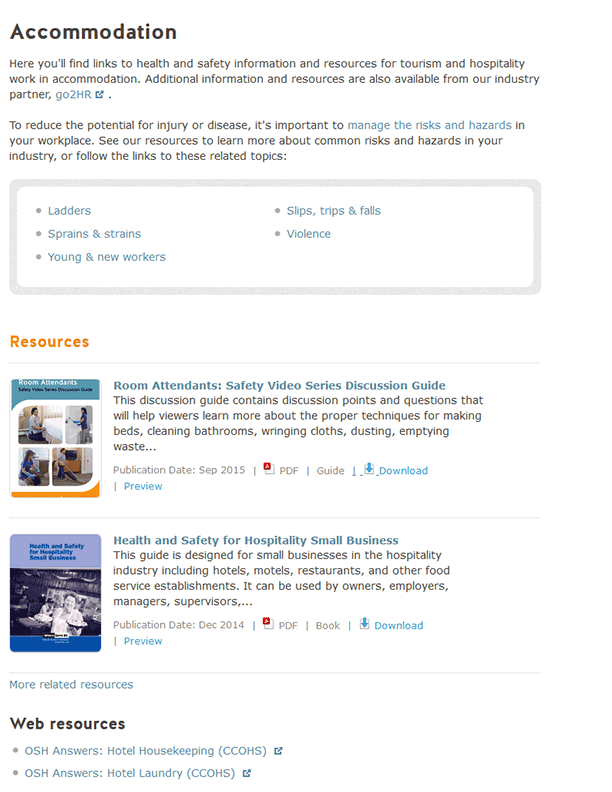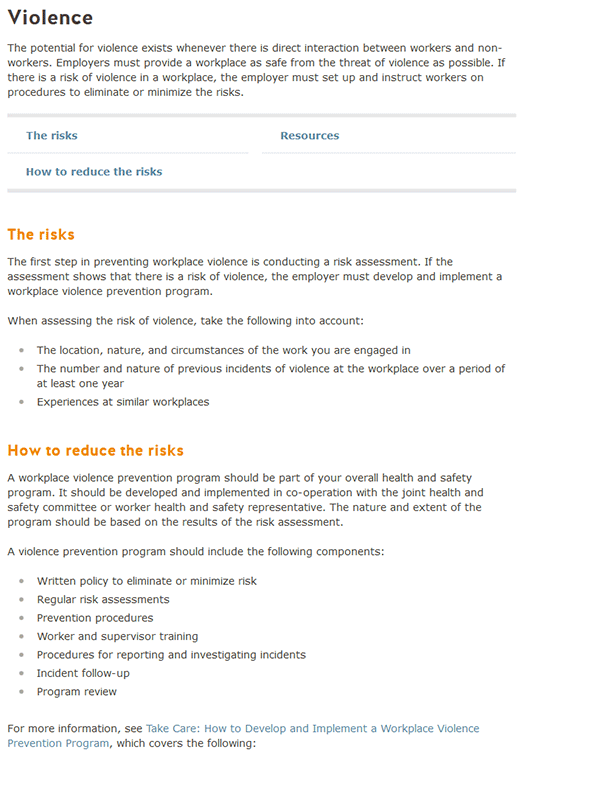December 11, 2023
An occupational health and safety program must be initiated and maintained by each employer with 20 or more workers in a workplace determined to be at moderate or high risk of injury, or any workplace with 50 or more workers. The risk factor of your workplace is determined by the hazard rating of your industry. For example, hotels and restaurants are classified as low risk. Take a moment to look up your own hazard rating.
The costs of workplace accidents to employers are not insignificant. These costs can exist in many forms, including the cost of the incident, the cost of any property damage, lost productivity and investigation expenses. Needless to say, it may take an employer some time to recover the costs associated with workplace accidents. WorkSafeBC provides a tool for calculating such costs associated with common injuries in the tourism and hospitality industry which can be accessed here: WorkSafeBC’s Tourism and Hospitality Safety Calculator
CONTENTS OF AN OCCUPATIONAL HEALTH AND SAFETY PROGRAM
A formal occupational health-and-safety program must include the following:
- (a) a statement of the employer’s aims and the responsibilities of the employer, supervisors and workers;
- (b) provision for the regular inspection of premises, equipment, work methods and work practices, at appropriate intervals, to ensure that prompt action is undertaken to correct any hazardous conditions found;
- (c) appropriate written instructions, available for reference by all workers, to supplement the Occupational Health and Safety Regulation;
- (d) provision for holding periodic management meetings for the purpose of reviewing health-and-safety activities and incident trends, and for the determination of necessary courses of action;
- (e) provision for the prompt investigation of incidents to determine the action necessary to prevent their recurrence;
- (f) the maintenance of records and statistics, including reports of inspections and incident investigations, with provision for making this information available to the joint committee or worker health and safety representative, as applicable and, upon request, to an officer, the union representing the workers at the workplace or, if there is no union, the workers at the workplace; and
- (g) provision by the employer for the instruction and supervision of workers in the safe performance of their work.
Operations with a workforce of fewer than 20 workers must initiate and maintain a less formal program. Such programs must include regular monthly meetings with workers for discussion of health-and-safety matters, the correction of unsafe conditions and practices, and the maintenance of a cooperative interest in the health and safety of the workforce. The employer must maintain a record of the meetings and the matters discussed.
To explore more health and safety resources visit here.
Information provided by Ryan Anderson, an employment lawyer with Mathews Dinsdale & Clark LLP. The information provided in this article is necessarily of a general nature and must not be regarded as legal advice. For more information about Mathews Dinsdale & Clark LLP, please visit mathewsdinsdale.com.
This article may not be republished without the express permission of the copyright owner identified in the article.
go2HR is BC’s tourism & hospitality, human resources and health & safety association, driving strong workforces and safe workplaces that deliver world-class tourism and hospitality experiences in BC. Follow us on LinkedIn or reach out to our team.
Return to top
